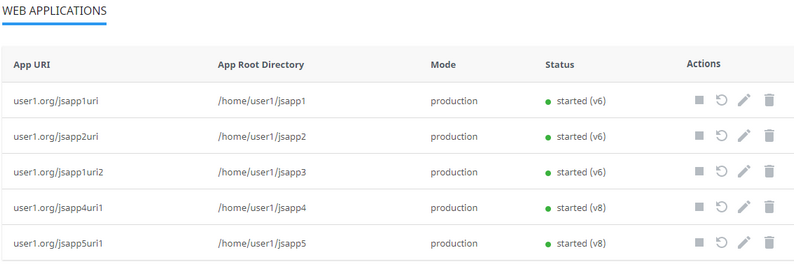

Creating a new application through the ‘Application Manager.Cloning through the Git version of cPanel.
NODE JS CPANEL INSTALL
If everything looks good, click on ‘Provision’ for starting the installation process.Īfter this process, the cPanel users can install the Node.js web applications through: Ensure that there are no packages listed in the third column. In the next window, an overview of all the packages that will be installed will be shown.Toggle the button next to the Nodejs10 package and click on ‘Next’.Next, you need to click on ‘Additional Packages’.Click on the ‘Customize’ option for installing new packages.Click on ‘EasyApache4’ in the Software section.You will get a message as node.js installed successfully.Now, it will ask for the confirmation in that type “y” and hit enter.To install node.js, type this command, yum install ea-nodejs10 and press Enter.Now, it will ask for the confirmation in that type “y” and hit Enter.Then click Create application and follow the. Simply log in to your cPanel account and click on the Setup Node.js App icon. In fact, cPanel’s Node.js Selector makes it easy to set up Node.js apps.
NODE JS CPANEL MOD
NODE JS CPANEL HOW TO
Getting started with cPanel Getting started with Node.js Run and maintain Node application Final steps I don’t think I’ve seen a single post on how to properly set up a Node.js application in a shared or dedicated hosting with cPanel.

in light of the fact that Node.js is not a complete JavaScript mechanism, it is true that many of its important modules are created in JavaScript. tutorial cPanel nodejs pm2 sapper hosting Table of Contents. Node.js is an open-source, multi-channel JavaScript runtime environment that is used for creating a different assortment of applications.

It had to be either manually installed on the server or by purchasing Cloud Linux if they provided the Node.js support. Earlier cPanel did not provide any support for Node.js. In the latest v80 release of cPanel, they have introduced the support for Node.js.


 0 kommentar(er)
0 kommentar(er)
